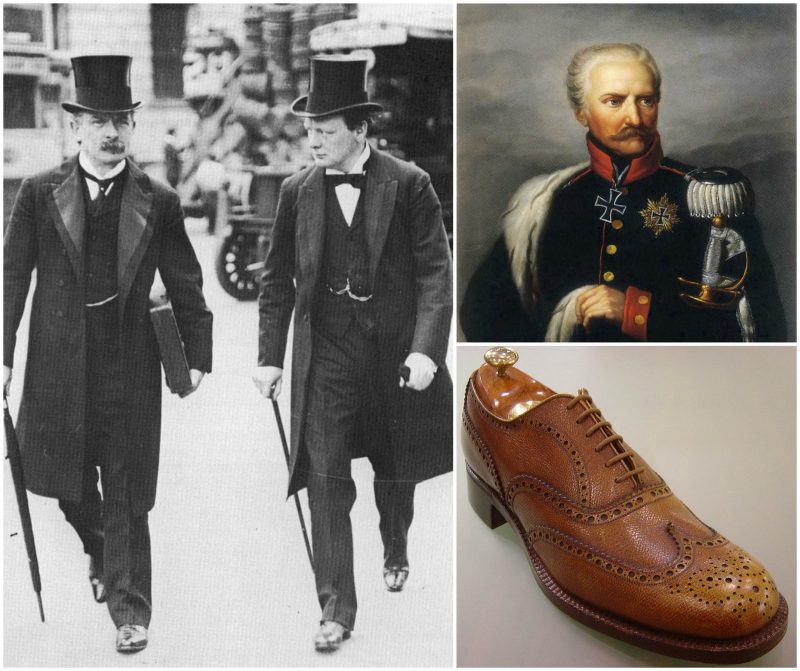The word “Brogue” derives from the old Gaelic word “bróg” (or “barrog” in a Scottish accent) which means “rough shoe”. Its use can be tracked down to the 17-th century.
The general term could refer to a couple of possible variations, like “the accent of the people who wear the rough shoe,” “the people who talk like they have a shoe in their mouth,” or even a “speech impediment.”
Today, Brogue refers to the stylish footwear which is characterized by decorative holes and serrations. Additionally, the term also refers to an ancient alleged fact that the ancient Scottish folk, who resided on wet boglands, wore holes in their shoes to let the water leak out of their shoes. However, this is highly unlikely because of the fact that the holes would let water in, rendering the footwear inefficient. The simple etymology and origin of the word Brogue have done nothing to explain what the fuss is all about.
Nevertheless, the quarrel between the Oxford-wearing, pompous gentlemen and the Brogue-wearing, casual blokes continues. The new, popular spy-action movie Kingsman: Secret Service, has further intensified the dispute.
Collin Firth’s role as the sophisticated gentleman spy prefers the Oxford shoe as his sharp weapon of choice. Being a dangerous agent, he hides a poison-tipped knife in the sole. The Oxford shoe, in contrast to the Brogue, has a smooth surface and is favored as a true gentleman’s formal attire.
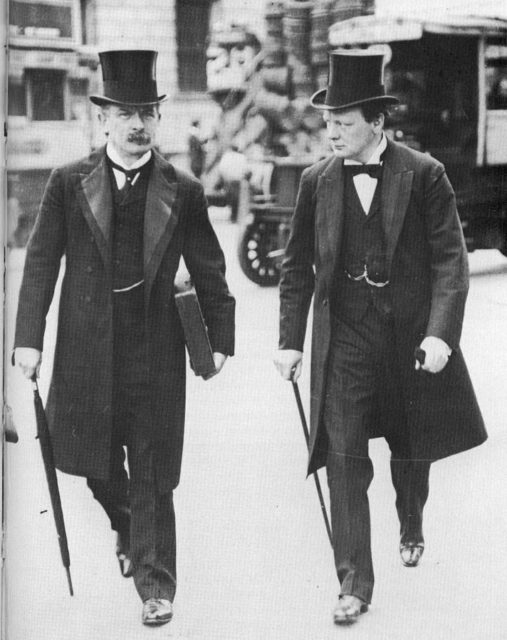
The brogue shoe’s characteristic trait is the decorative leather holes called “broguing,” and serrations around the shoe’s edges. Sturdy, high-quality leather protects the low-heeled traditional style. Additionally, the early Brogue shoes used untanned leather hides.
Brogues were meant to be worn as outdoor or country footwear. This means that they were considered to be outdoor or country footwear, inappropriate for business and formal occasions. In contrast, the smooth Oxford shoe is worn with formal attire.
There are four toe-cap Brogue styles: wingtip, semi, quarter, and longwing. The closure styles are Oxford, Derby, Ghillie, and Monk. The lacing method varies, as a Brogue is not necessarily an Oxford.
The derby or blucher shoe is named after the 18th-century Prussian field marshal Gebhard Leberecht von Blucher after he commissioned a boot which improved the footwear of his soldiers. He modified the basic boot with side pieces which were lapped over the front. Many armies adopted this design.
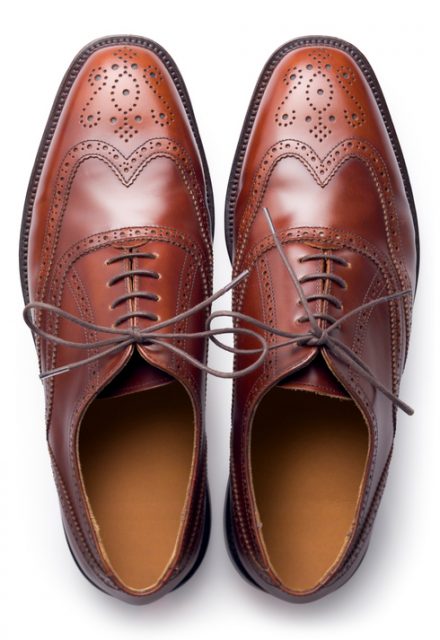
The harsh, dated opinion of the brogue’s rather casual appearance is not suitable for suits (pun intended). Over the ages, it has grown to sheer disdain and prejudice for the footwear.
Many gentlemen prefer the smooth, minimalistic Oxfords to the perfect Brogues, which are perhaps way too stern. To wear the brogues with a formal suit is frowned upon, as Brogues are country shoes unfit for “stylish city gents.”
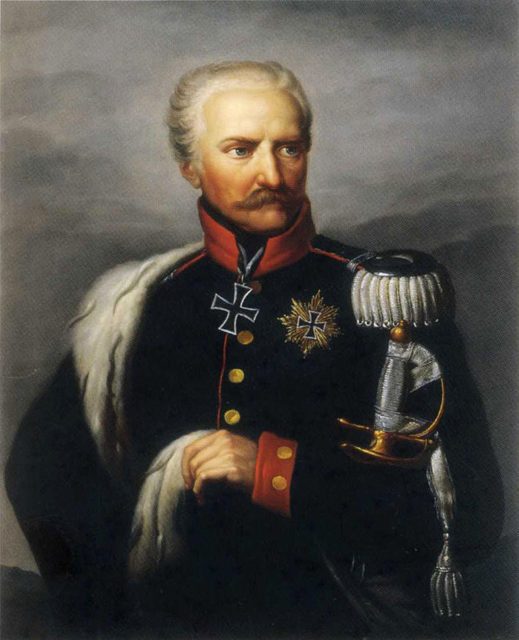
Furthermore, the Oxford’s name goes back to the 1800s at the Oxford University, among the prominent and wealthy students. It has quickly become a popular standard among the gentleman dandies of the 19-th century.
Apart from the appearance, the main difference is the lacing. The Oxfords’ lace eyelet has been sewn underneath the vamp, with many different lacing combinations at one’s disposal. Of course, the Derby or Bluchers have the shoelace eyelets attached to the top of the vamp.
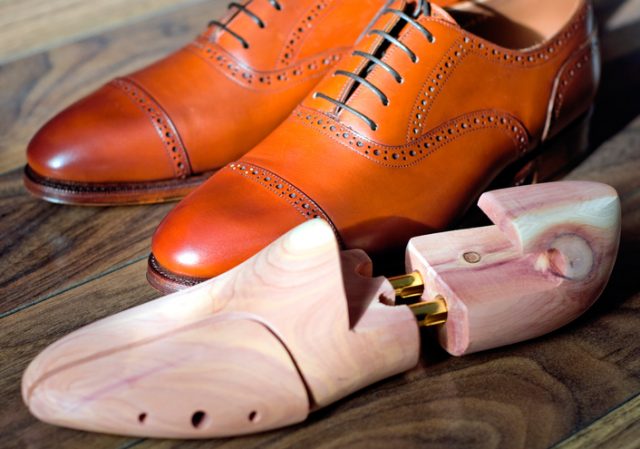
To sum up, the Oxfords are a basic staple of dress shoes, with their closed lacing which defines the businessmen’s integrity. The Brogues are a traditional archetype of stylish casual wear, emphasizing the individualistic nature of the wearer.
If the formal gatherings or business meetings are of high priority, the Oxfords are an absolute necessity. If the parties are too chaotic, or unforeseen bar fights ensue, the Brogues will endure.
